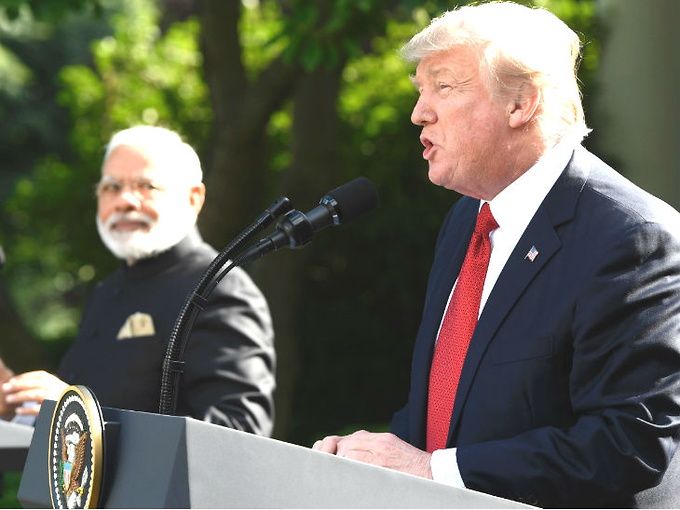Introduction
In a bold move to reshape America’s trade policies, President Donald Trump has declared April 2 as “Liberation Day,” marking the introduction of a new wave of tariffs aimed at reducing the country’s reliance on foreign goods. The event, titled ‘Make America Wealthy Again,’ was held at the White House’s Rose Garden at 1:30 AM IST (April 3 for Indian viewers). Trump insists that these tariffs will revitalize U.S. manufacturing and create domestic jobs. However, critics warn of rising costs for American families and potential economic turmoil. With the immediate implementation of these tariffs, businesses and consumers alike are bracing for the impact.
Trump’s ‘Liberation Day’: What It Means for America
A New Trade War Begins
President Trump’s latest economic move centers around tariffs that he claims will restore America’s industrial strength. The details remain uncertain—will they be reciprocal, universal, or selectively applied? While supporters hail the decision as a step toward self-reliance, economists and business leaders are concerned about potential repercussions on trade and household expenses.
Immediate Implementation: What to Expect
Unlike previous tariffs that came with a phase-in period, these duties take effect immediately, starting Thursday. Importers must now pay additional taxes on foreign products, which could lead to higher prices for consumers. The government expects increased investments from domestic companies, as many CEOs have pledged billions to avoid these new taxes.

The Economic Impact of Trump’s Tariffs
Rising Costs for Consumers
Most financial analysts predict that the burden of these tariffs will fall on average American families. As businesses adjust to higher import costs, prices on everyday goods—from electronics to groceries—could rise. Some estimates suggest that lower-income households may feel the greatest strain.
Business Reactions: Boon or Bane?
While Trump envisions a manufacturing resurgence, many industries reliant on international supply chains fear disruption. Some U.S. firms, particularly in the tech and automobile sectors, have expressed concerns over production costs and global competitiveness. However, select companies are already shifting operations back to the U.S., potentially creating new job opportunities.
A Political Power Play or Genuine Reform?
Trump’s tariffs are widely seen as a political maneuver ahead of the upcoming elections. The move plays well with his base, reinforcing his ‘America First’ economic vision. However, international trade partners may retaliate, leading to potential diplomatic strains and economic volatility. The long-term sustainability of these tariffs remains in question—will they drive self-sufficiency, or will they be a short-lived negotiation tactic?
Global Reactions & Market Response
Financial markets reacted cautiously to the announcement, with volatility in the stock and currency exchanges. Global trading partners, including China and the European Union, have hinted at possible countermeasures. The coming weeks will reveal whether Trump’s tariffs lead to greater economic independence or an escalating trade war.
Historical Context: Lessons from Past Trade Wars
Tariffs have long been used as a tool in global trade disputes. The U.S. has a history of implementing protectionist measures, with mixed results. The Smoot-Hawley Tariff Act of 1930, for example, contributed to a global economic downturn, while some modern tariffs have successfully pressured foreign governments into trade deals. Observing past patterns can provide insights into how this latest round of tariffs may play out in the long run.
Relsted news – Trump Tariffs
Industries Most Affected
Certain industries will be hit harder than others. The automobile, technology, and consumer electronics sectors may experience increased costs, leading to higher prices for consumers. On the other hand, domestic steel and aluminum producers could benefit, as reduced competition might drive up demand for U.S.-made products. The energy sector could also see shifts, depending on how foreign suppliers react to the new trade policies.
Conclusion: The Uncertain Future of U.S. Trade
Trump’s ‘Liberation Day’ is a defining moment in his presidency, marking a renewed push for economic nationalism. While the administration touts job creation and manufacturing revival, concerns about rising costs and trade conflicts persist. Whether these tariffs bring long-term prosperity or economic instability remains to be seen. As America braces for change, businesses and consumers alike must navigate the new economic landscape.
Disclaimer
This article is for informational purposes only and does not constitute financial, legal, or investment advice. Readers should consult professionals before making economic decisions based on tariff changes.





2 thoughts on “Trump Declares ‘Liberation Day’ as New Tariffs Take Effect (2024)”